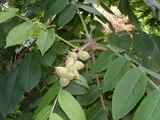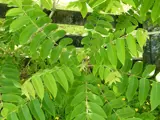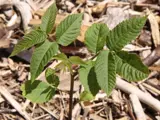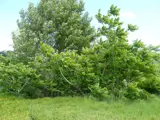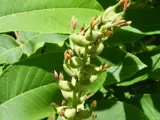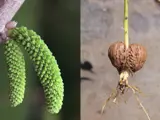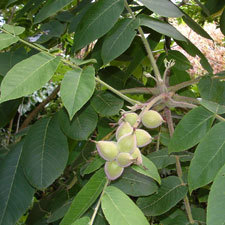 Japanese walnut
Japanese walnut
Common name: Japanese walnut
Botanical name: Juglans ailantifolia
Management category: Advisory
Originally from Japan Japanese walnut was introduced to New Zealand as an ornamental species and was recorded as naturalised in 1983.
Why is it a pest?
- Forms dense, tall stands which make it hard for other plants to grow.
- Favoured habitat of rats.
- Long-lived (50+ years), and produces many, long-lived seeds.
Where is it found?
Found throughout the Bay of Plenty region in disturbed forest and shrubland, especially edges of waterways from plantations.
What does it look like?
- A wide spreading deciduous hardwood tree.
- Brown buds open into alternate divided leave on a stalk.
- Groups of 9-22 small flowers with prominent pink stigmas (October to November) are followed by clusters of 10-22 sticky, downy, rust-coloured fruit containing hard, thick-shelled nuts.
What are the rules?
Advisory
Council does not enforce the control of advisory species. It is landowner/occupier responsibility to manage these pests. Council may provide advice on how to manage or control advisory species if required.
How do you get rid of it?
- Hand-pull (all year)
- Cut and Paste (all year) – Metsulfuron.
- Drill & fill (all year) – Metsulfuron.
- Spray (all year) – Metsulfuron.
CAUTION: When using any herbicide or pesticide, PLEASE READ THE LABEL THOROUGHLY to ensure that all instructions and directions for the purchase, use and storage of the product, are followed and adhered to.
Read more on pest control advice, information and regulations.
Images

